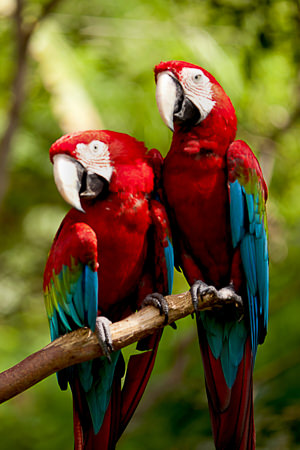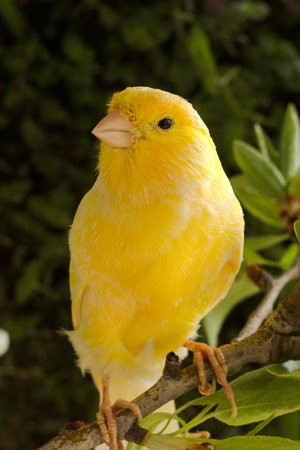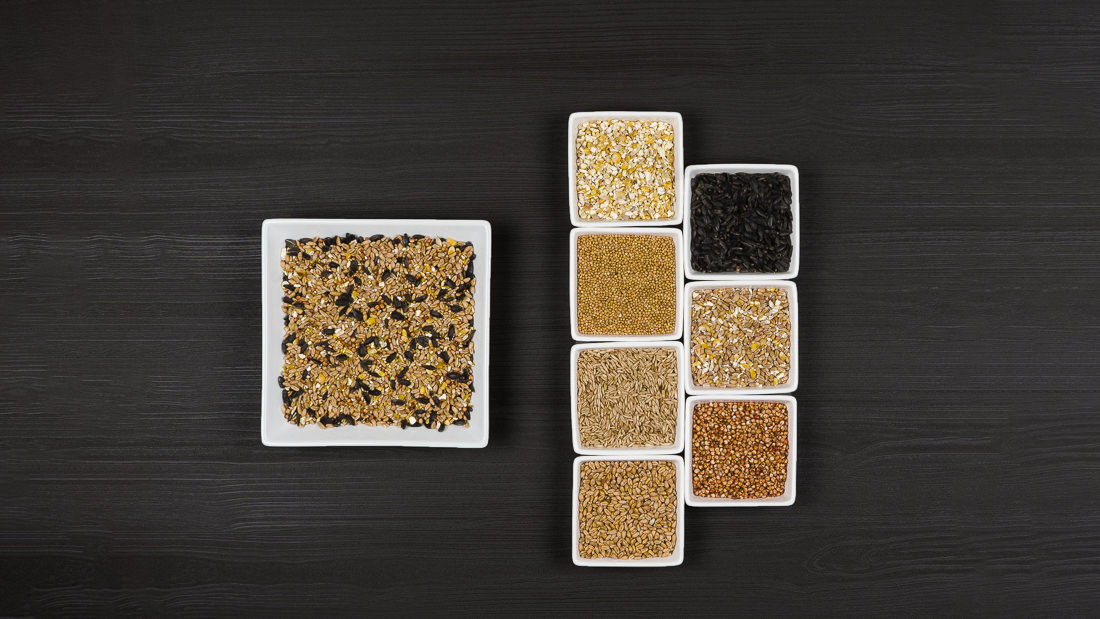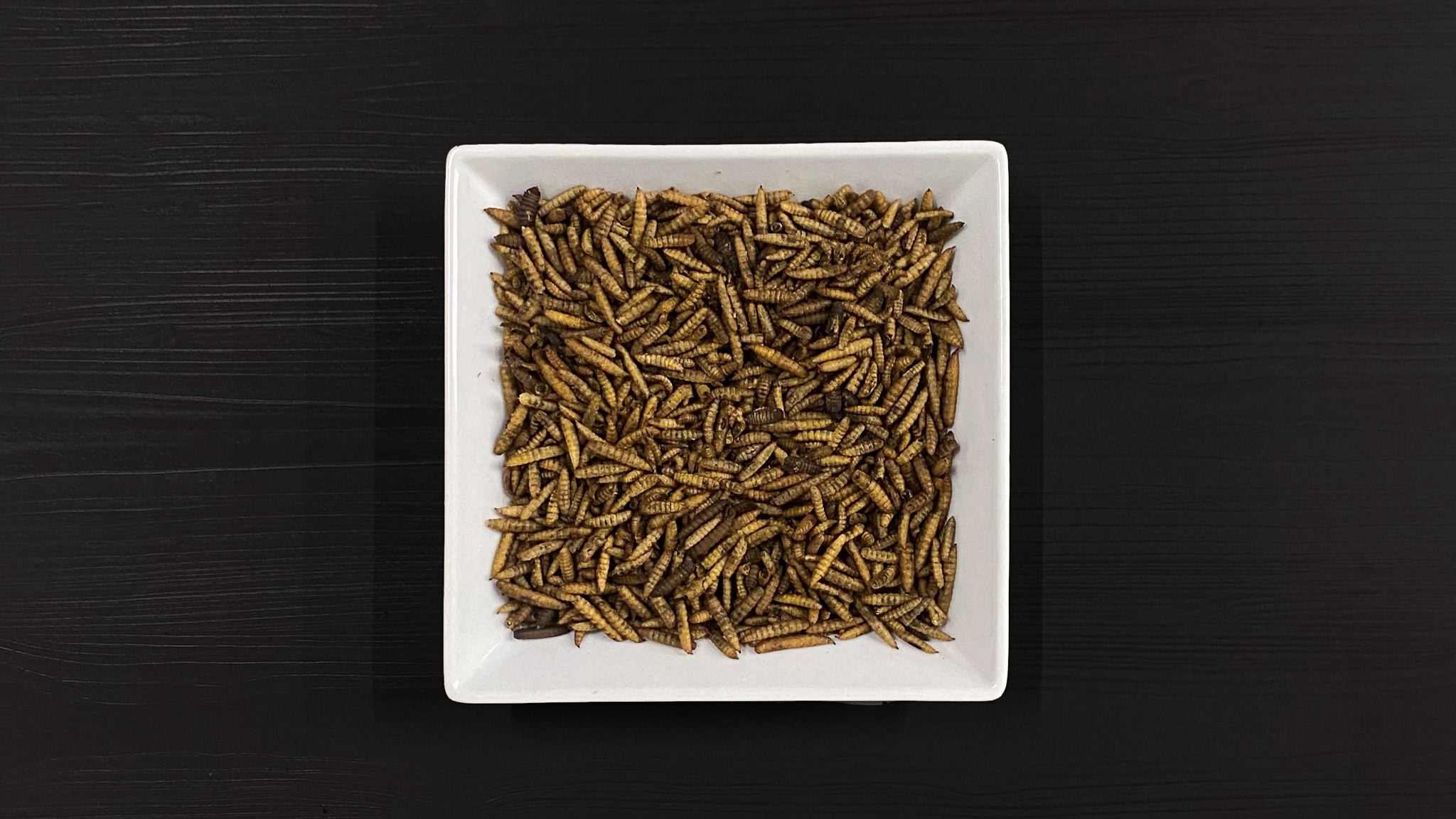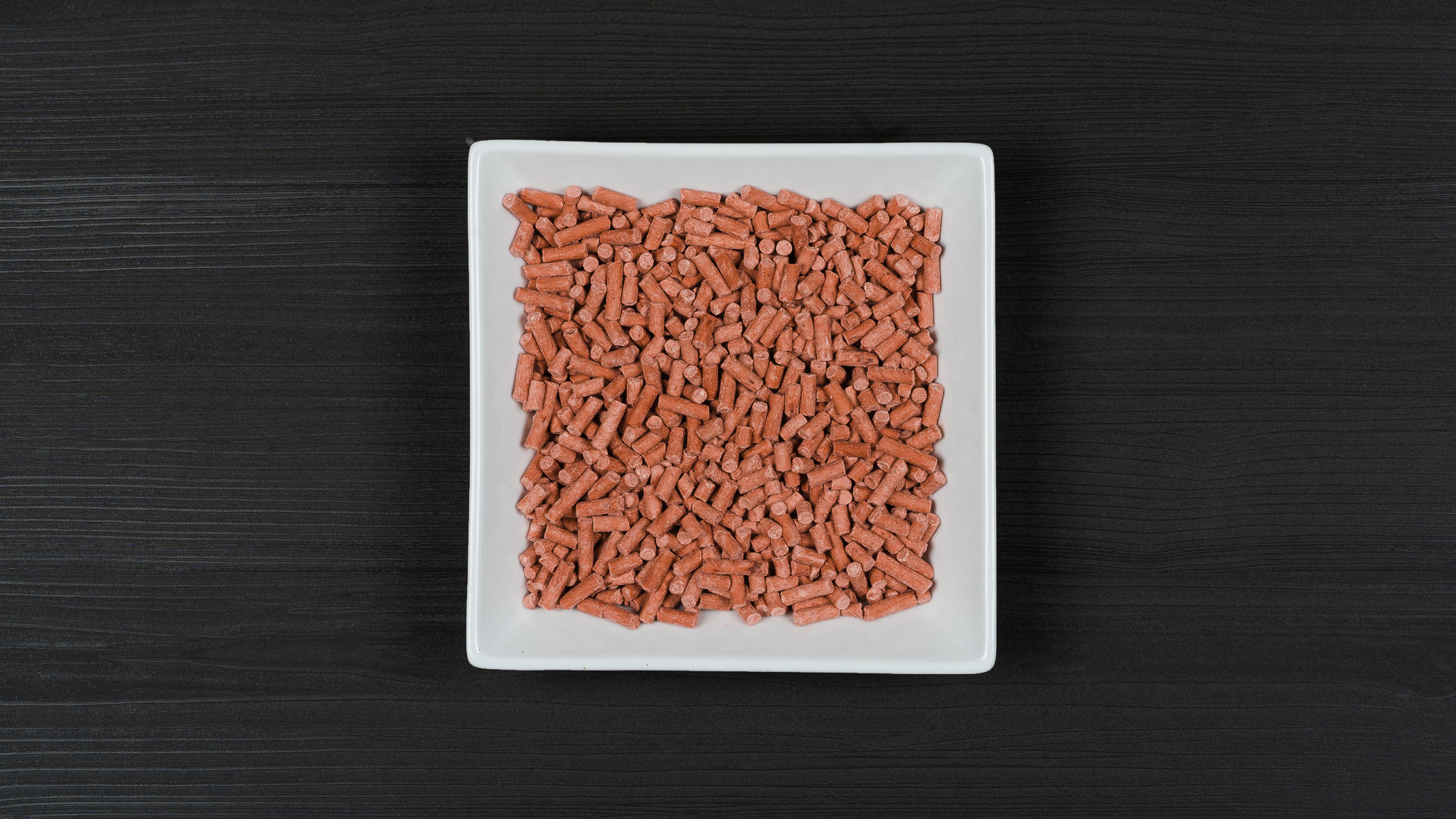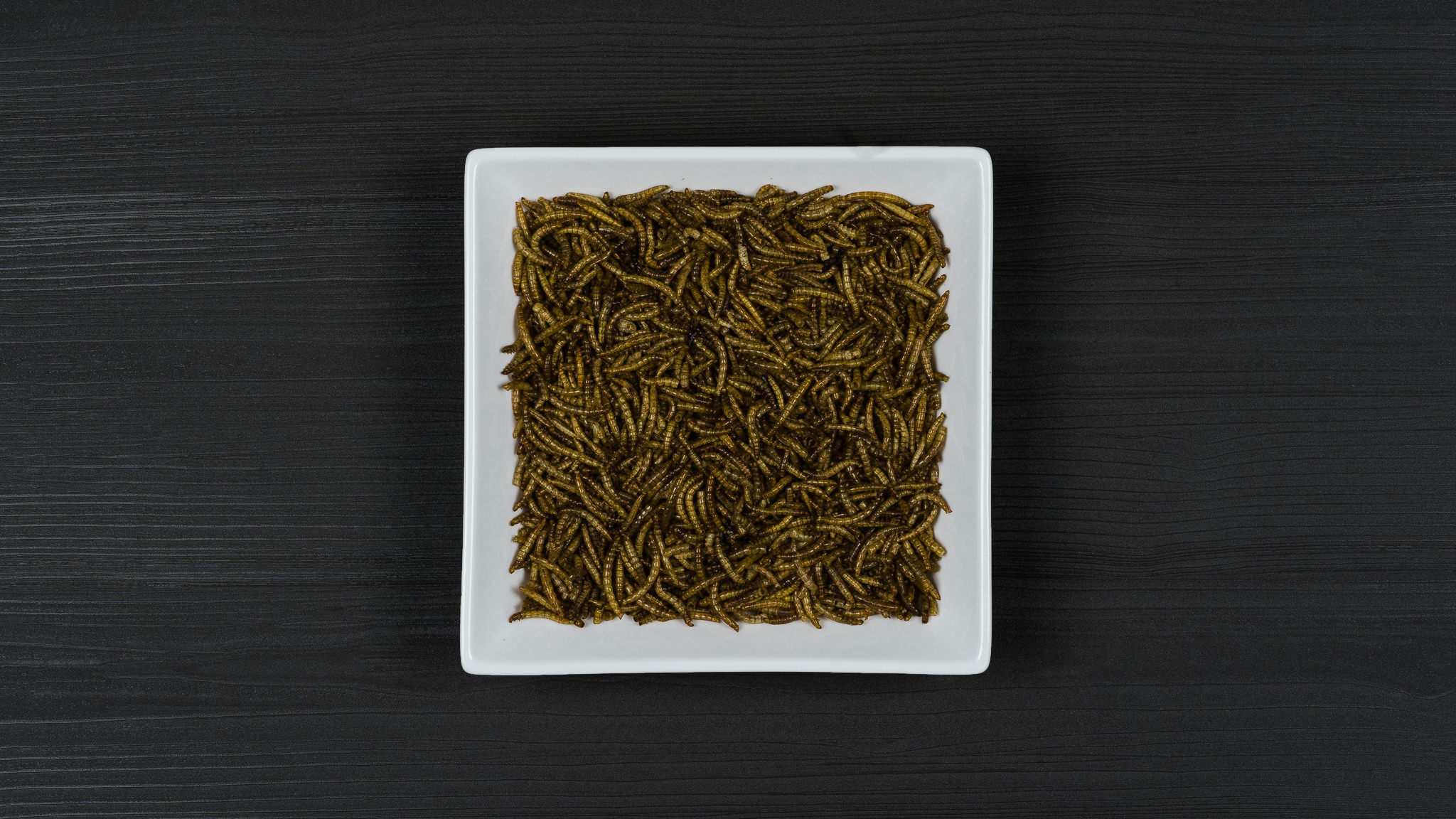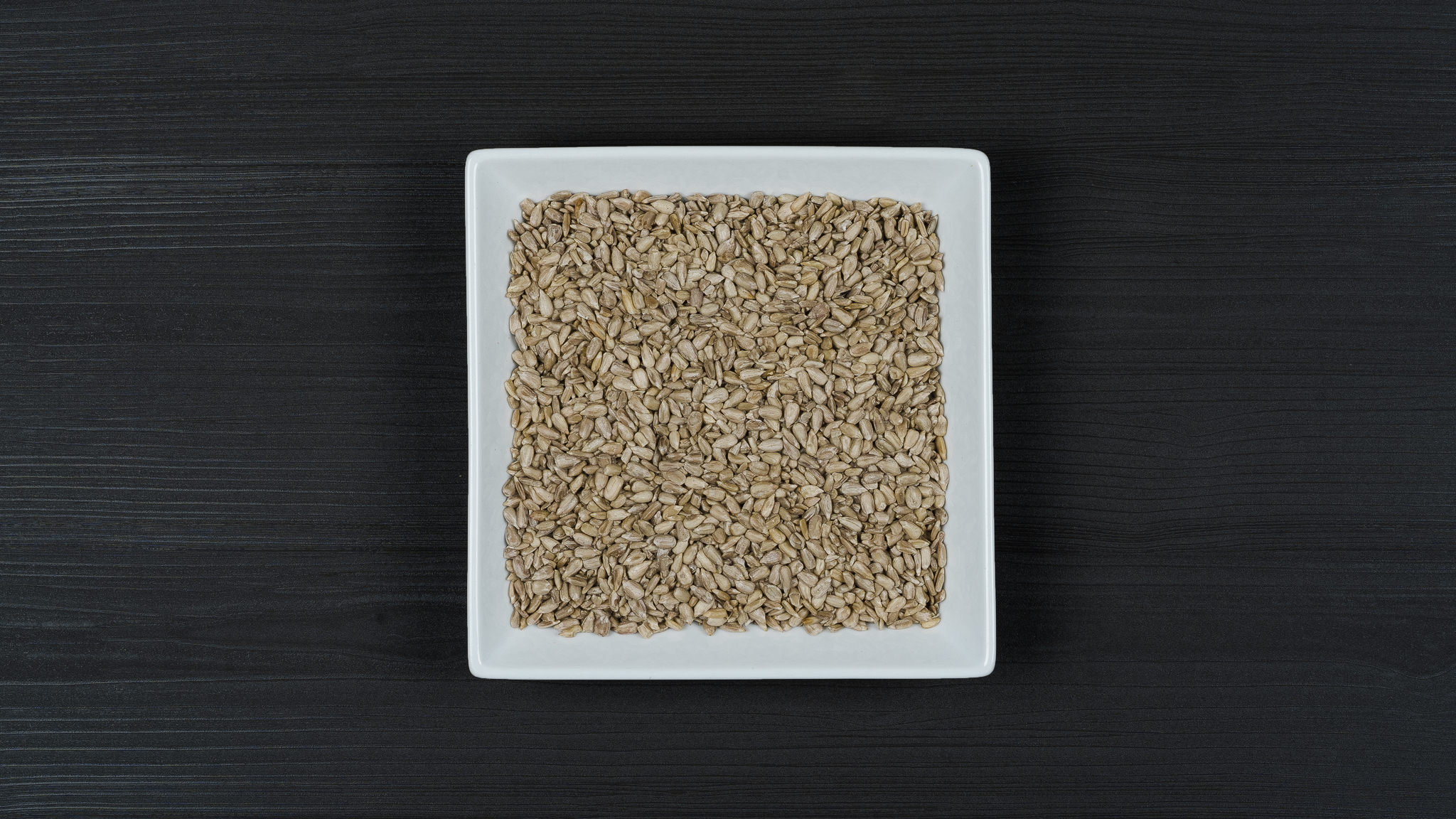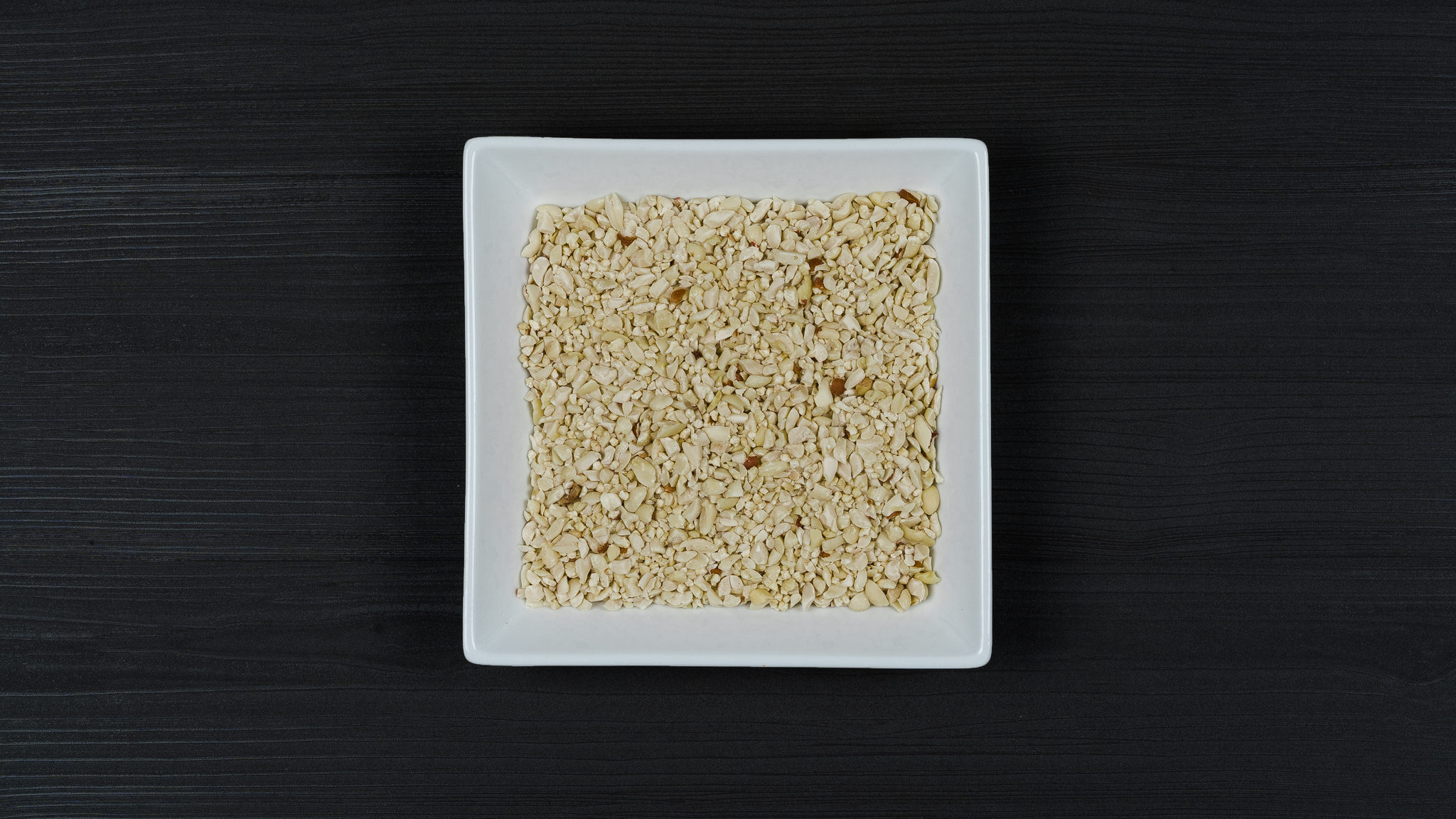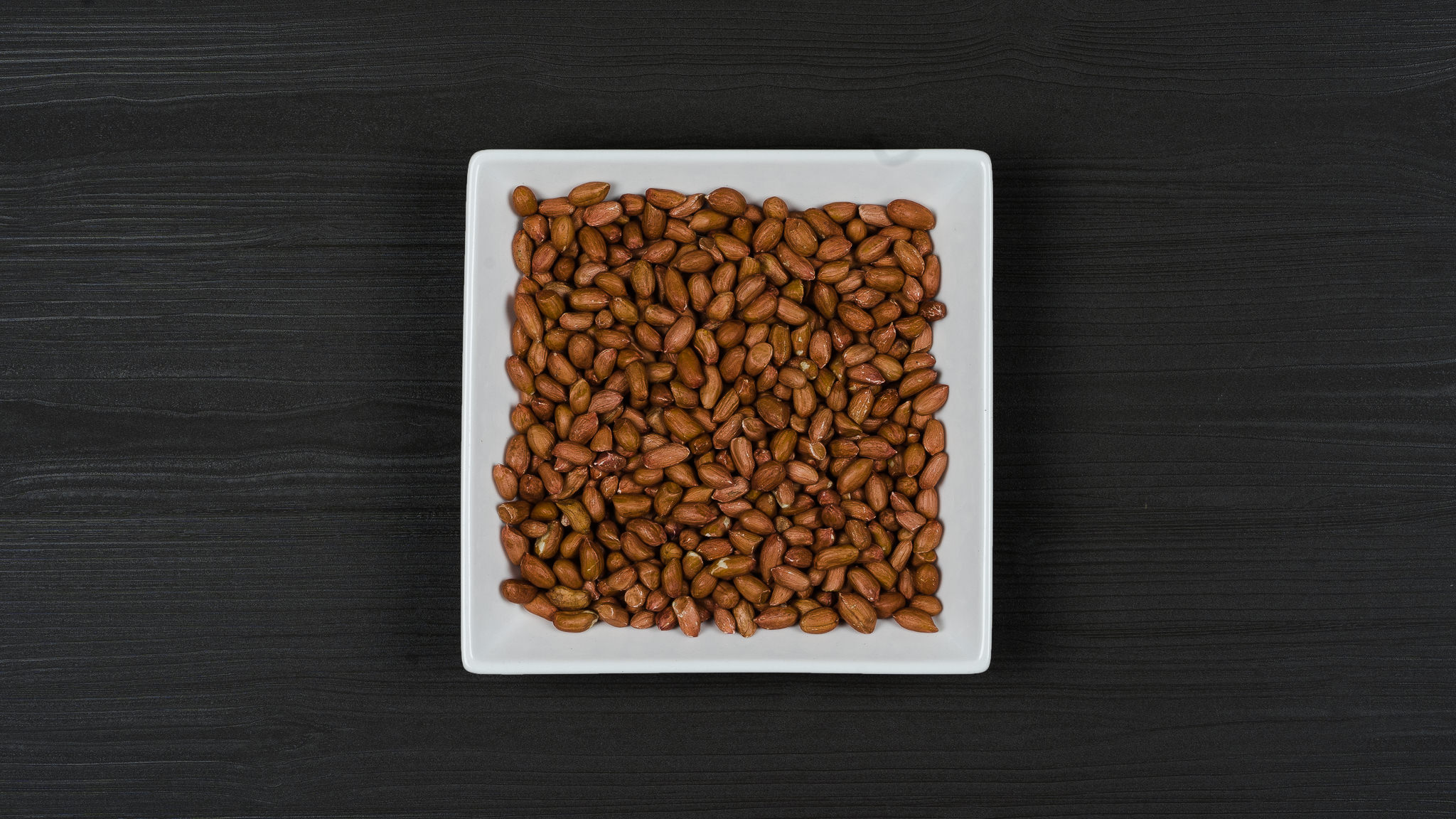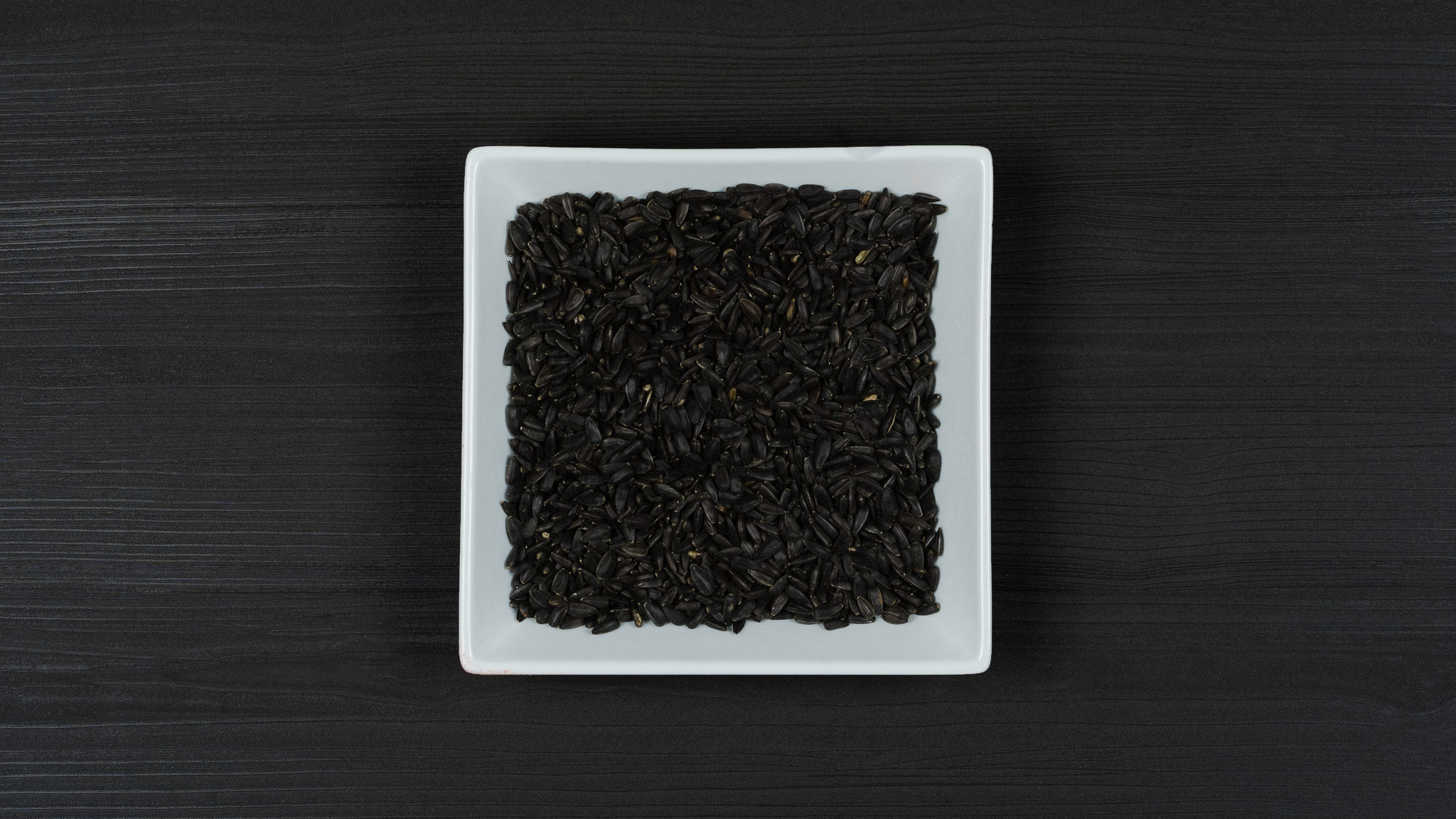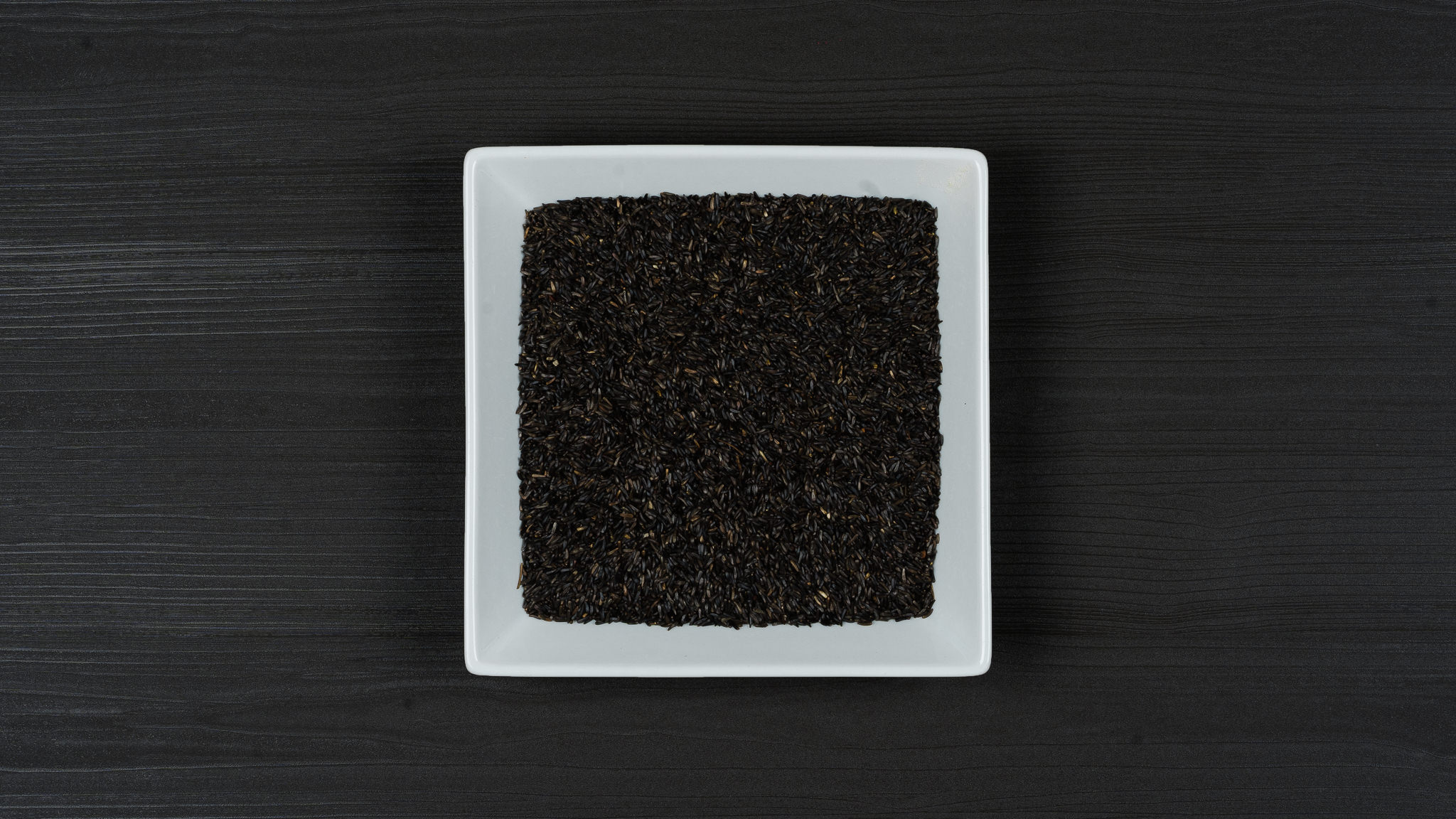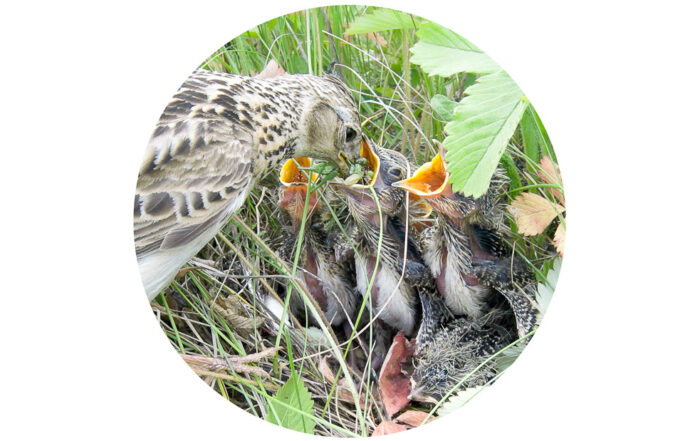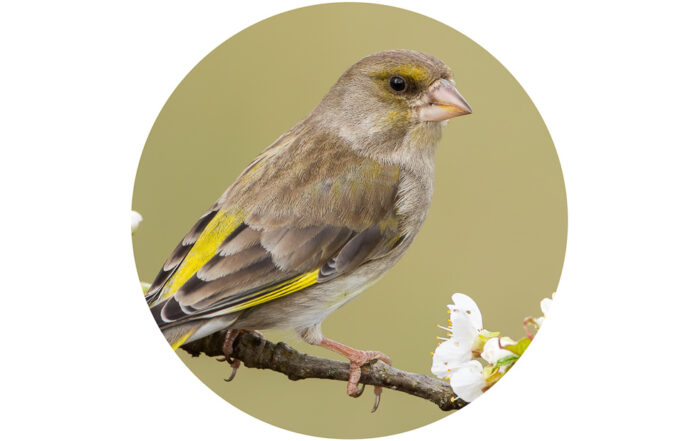Spotters’ Guide to Wild Birds
Blackbird
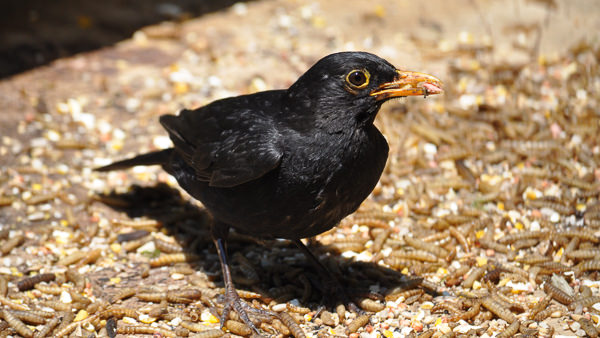
Despite their name, female and juvenile Blackbirds are actually brown, not black. However, both sexes can be identified by a bright orange-yellow beak and an eye ring, which is visible if you are close enough.
Length: c.24cm
Wingspan: c.36cm
Weight: c.90g
Insects, berries fruits and seeds are a staple in a Blackbirds’ diet. Our Ground & Table Mix is specifically formulated with ground feeders, particularly Blackbirds, in mind. Superior Wild Bird Food is also a favourite of Blackbirds due to the currants within the mix. For more information see our blog on What Do Blackbirds Eat?
Blackbirds are ground feeders, which means they won’t come to feeders. Instead, they hop around on the ground, raking through the undergrowth and debris. So, if you want to feed them, either scatter feed on the ground or use a ground feeder. Our Ground & Table Mix is specifically formulated with ground feeders, particularly Blackbirds, in mind.
Blackbirds breed from March through to June and typically have 2 or 3 broods. Clutch size is generally 3 – 4 eggs with an incubation period of 13 – 14 days. Fledglings tend to leave the nest at around the 14 – 16 day mark and Blackbirds have a lifespan of around 3 years.
Blue Tit
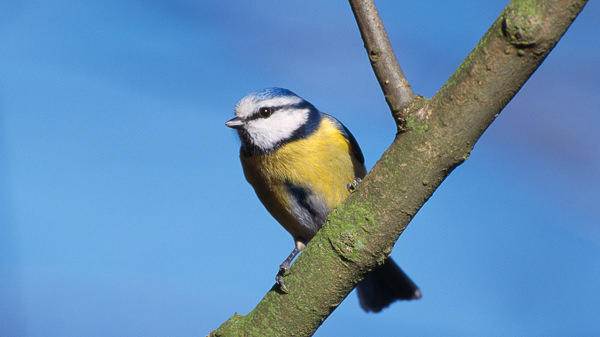
Blue Tits are one of the UK’s most loved birds and they are easily identified by their colourful mix of blue, yellow, white and green plumage. They have a blue cap and a white face with a black eye band, and a striking yellow breast. Commonly found in woodlands, scrubs and rural and urban gardens.
Length: c.12cm
Wingspan: c.18cm
Weight: c.11g
A Blue Tit’s diet consists of spiders, insects, fruit and seeds. Most of our blends are suitable for Blue Tits, including our Selected Wild Bird Food, Superior Wild Bird Food, and Premium Wild Bird Food. Although at times of high stress, they will also appreciate our Essential Blend for Spring & Summer, High Energy No Mess, our Robin & Songbird, and Energy Boost.
Blue Tits are extremely acrobatic and will even hang upside down from branches while looking for food. They will happily take from feeders and bird tables. In winter, they form family flocks which means you could have four or five Blue Tits on your feeders at once. For more information see our blog What do Blue Tits Like to Eat?
Blue Tits tend to have a relatively short breeding season – just April and May – resulting in 1 or 2 broods. However, each brood contains 8 or 9 eggs, which are incubated for 13 – 15 days. Youngsters fledge at 18 – 21 days and Blue Tits typically live for 3 years.
Bullfinch
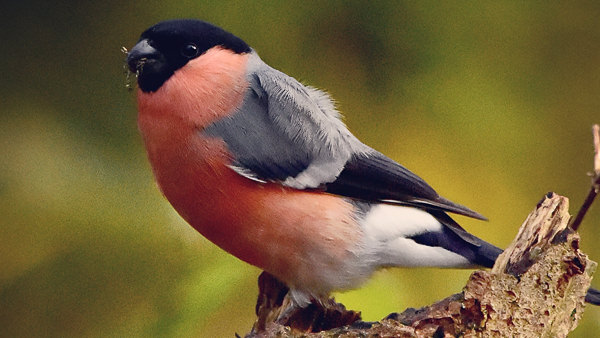
The male Bullfinch is easily identified by its red breast and cheeks, grey back and black cap and tail. The female Bullfinch is quite similar in appearance, sharing the black cap and tail with the male however the breast and cheeks are a faded yellow/brown.
Length: c.15cm
Wingspan: c.24cm
Weight: c.24g
Bullfinches like to eat fleshy fruits such as cherries, as well as buds, shoots and particularly seeds. However, they will eat insects when they have young, for extra protein, and feed their young on invertebrates as well. Many of our blends and individual feeds are loved by Bullfinches, in particular our Goldfinch Mix, which despite its name, is loved by all Finches. They also love our No Mess, No Grow Wild Bird Food, Dried Mealworms and Dried Calciworms.
Bullfinches prefer hedges, shrubbery and woodland. However, they will happily come to bird tables and hanging feeders, as they love Sunflower Hearts.
Bullfinches breed from April to July and usually have 2 or 3 broods of 4 to 5 eggs. Incubation is between 14 and 16 days and the fledglings leave the nest at the 15 – 17 day mark. The typical lifespan of a Bullfinch is 2 years.
Chaffinch

The male Chaffinch is easily recognised with his grey cap, orange-pink cheeks and breast and a reddish-brown mantle. Females and juveniles are less colourful, sporting grey-brown upper-parts and greyish-white underparts. Both sexes have distinct white wingbars.
Length: c.14cm
Wingspan: c.26cm
Weight: c.24g
Chaffinches have the widest diet of all the Finch species, which includes invertebrates in summer, and lots of seeds. They will love most of our blends but particularly our Goldfinch Mix, Essential Blend for Spring & Summer, High Energy No Mess and Ground & Table Mix. Dried Mealworms and Dried Calciworms are also great, particularly when natural foods are scarce for example in winter or during The Food Gap.
Chaffinches tend to forage on the ground, preferring to hide beneath tables and hedges. However, they will take from bird tables and occasionally feeders.
Chaffinches have a short breeding season, from April to May, and usually have just 1 brood of 4 to 5 eggs. Incubation is between 12 and 13 days and the fledglings leave the nest at the 13 – 16 day mark. The typical lifespan of a Chaffinch is 3 years.
Coal Tit
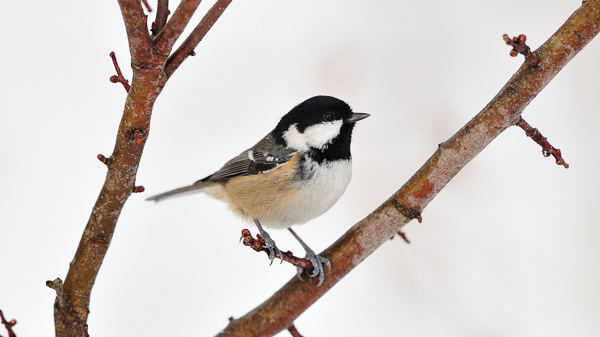
The Coal Tit is the less colourful cousin of the Great Tit and is identifiable by its grey and white plumage, black cap and white cheeks and nape. It can be distinguished from the similar Marsh Tit and Willow Tit by its white wingbars and the white patch on the nape of its head. Marsh Tits and Willow Tits have plain wings and entirely black caps. While male and female Coal Tits are pretty much similar, juvenile Coal Tits have a yellow hue to their plumage distinguishing them from the adults.
Length: c.11cm
Wingspan: c.19cm
Weight: c.9g
The Coat Tit will actively seek out insects and spiders among the leaves and branches of woodland trees. They are particularly keen on the seeds of conifers too, which they eat in wintertime. Coal Tits love the majority of our blends and will often flock to feeders to gorge on them.
The Coal Tit is a fairly shy but active feeder. Like the Blue Tit, they can be fairly acrobatic and can be seen hanging upside down to try and get their food. However, as quickly as they arrive at your feeder, they will just as quickly go. Coal Tits tend to take food and hide it to then eat later, creating a larder of sorts.
Coal Tits start to breed in mid-April and usually have 1 brood of 9 – 10 eggs. Incubation is between 14 and 16 days and the fledglings leave the nest at 16 – 19 days. The typical lifespan of a Coal Tit is around 2 years.
Dunnock
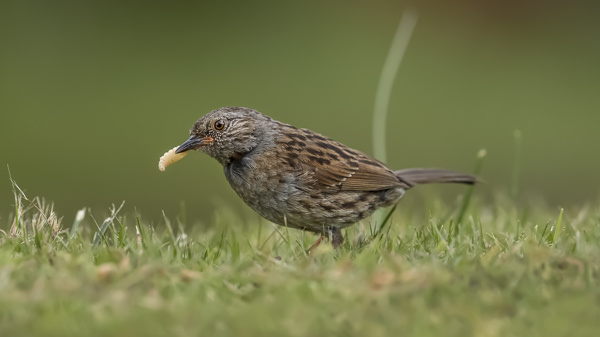
The Dunnock is often described as a drab bird due to its brown and grey colouring, with the difference between males and females being almost indistinguishable. However, this little garden visitor is a fascinating bird to watch. They creep along hedgerows with a shuffling gait, which explains its alternative names Hedge Sparrow or Hedge Accentor. When two males meet, they become very animated, flicking their wings and letting out a rather territorial call.
Length: c.14cm
Wingspan: c.20cm
Weight: c.21g
Dunnocks feed mostly on insects, making Dried Mealworms and Dried Calciworms perfect for these birds, but you can supplement this in the winter with seeds. They love most of our blends, including our Selected Wild Bird Food, Superior Wild Bird Food, and Premium Wild Bird Food, but also Essential Blend for Spring & Summer and Robin & Songbird.
Dunnocks are a somewhat private bird, as they tend to forage on the ground and undercover. To feed these birds either scatter food on the ground or use a ground feeder.
Dunnocks breed between mid-April and July and usually have 2 or 3 broods. Their average clutch size is 4 or 5 eggs. Incubation is 14 – 15 days and the fledglings leave the nest at the 12 – 15 days. The typical lifespan of a Dunnock is around 2 years.
Goldfinch
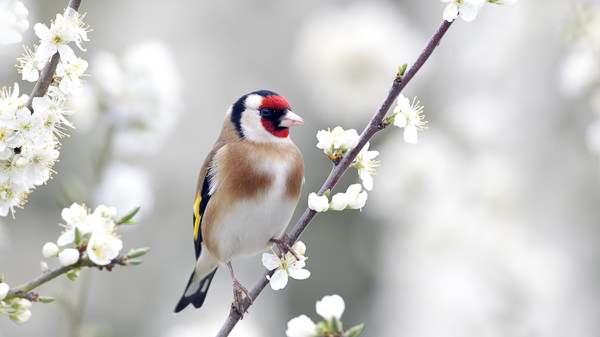
The Goldfinch is a striking, brightly coloured bird with a red face, black and yellow wing patches and a short, notched tail. They have sharp bills that look more delicate than other Finches. The difference between males and females is hard to deduce without getting up close, but if you do then the first thing you may notice is that males tend to have a larger area of red whereas females have a smaller, darker area of red on the face.
Length: c.12cm
Wingspan: c.24cm
Weight: c.17g
Goldfinches feed mainly on small seeds and weeds in fields and gardens. In summer, they will take invertebrates too, for extra protein. Our Goldfinch Mix is specifically formulated with this beautiful little bird in mind and they love our Essential Blend for Spring & Summer. They are also particularly fond of Niger Seed and may even throw other seeds out the way to get to them.
This colourful bird can be found in orchards, parks, gardens and heathlands. Their long, pointed bills help them to extract their favourite seeds from thistles, teasels and dandelions.
Goldfinches breed between April and July and usually have 2 or 3 broods. Their average clutch size is generally 5 eggs, with incubation taking between 13 – 15 days. Fledglings leave the nest between the 14 – 17 days. The typical lifespan of a Goldfinch is around 2 years.
Great Spotted Woodpecker

The Great Spotted Woodpecker is one of the larger visitors to the garden. The males have a red nape on the back of their head and white shoulder patches, whilst the females have white shoulder patches but a black crown and nape. Juvenile Great Spotted Woodpeckers somewhat mimic this except their crown is also red, which looks fairly similar to a male Lesser Spotted Woodpecker. Telling the difference between the Greater and Lesser Spotted Woodpecker however is fairly simple. The Great Spotted Woodpecker (on males, females and juveniles) have a red flank, whereas the Lesser Spotted Woodpecker has a black and white spotted flank.
Length: c.22cm
Wingspan: c.36cm
Weight: c.85g
Great Spotted Woodpeckers feed mainly on insects hidden under bark or in dead wood. They also eat tree seeds and other birds’ eggs. As they feed extensively on insects, try putting out Dried Mealworms or Dried Calciworms to ensure they get plenty of protein. They also particularly enjoy our High Energy No Mess and No Mess, No Grow Wild Bird Food.
This bird’s distinctive drumming is one way to tell if you have them in your garden. It will cling to trees and drum with its beak to lure out insects. Great Spotted Woodpeckers have been increasingly “spotted” in gardens, hanging from feeders.
Great Spotted Woodpeckers breed in April and May and tend to have a single brood of 4 to 6 eggs. Their incubation period is 14 – 16 days and fledglings stay in the nest until around the 20 – 24 day mark. The lifespan of the Great Spotted Woodpecker is unknown, however we believe the average to be 2 to 5 years. That being said, the longest recorded age of the Great Spotted Woodpecker is 11 years.
Great Tit

The Great Tit gets its name because it is a the largest of the Tits. They have a black head and neck, white cheeks, olive upperparts and yellow underparts with a vertical black stripe running down the centre of its belly. Female Great Tits are similar to the male but have a thinner belly stripe. Like other young Tits, the juvenile Great Tit is distinguished by yellow hues.
Length: c.14cm
Wingspan: c.24cm
Weight: c.18g
The Great Tit has a varied diet of invertebrates, particularly butterflies and beetles, spiders, insects, and winter seeds and fruits. They love just about all of our blends, but especially our Essential Blend for Spring & Summer, High Energy No Mess and No Mess, No Grow Wild Bird Food. Being insectivorous, they love our Dried Mealworms and Dried Calciworms too.
Great Tits are a regular at the feeder where it uses its relatively large size to fight off smaller birds. Great Tits tend to follow Coal Tits to see where they are hiding their food.
Great Tits breed in April and May and tend to have 1 or 2 broods with 7 to 9 eggs. Their incubation period is 13 – 15 days and fledglings stay in the nest until around the 18 – 21 day mark. The lifespan of the Great Tit is usually 3 years.
Greenfinch
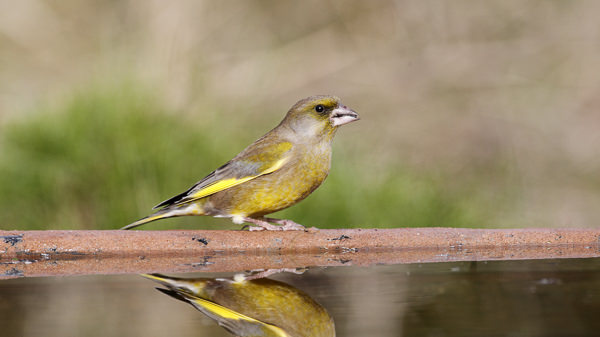
This common, fairly large Finch has a lovely olive-green colour and is often seen as a bright flash of green and yellow as it flies past. Females have the same prominent yellow wing edge as males, however it is less extensive. For juveniles, the yellow wing edge is still visible but slightly duller.
Length: c.15cm
Wingspan: c.26cm
Weight: c.28g
Greenfinches tend to feed on large seeds, including rose hips and cereal grains. However, they do eat invertebrates and feed them to nestlings for extra protein. Many of our blends are loved by Greenfinches, particularly our Goldfinch Mix as it is loved by all Finches. Premium Wild Bird Food, Essential Blend for Spring & Summer, and High Energy No Mess are also firm favourites, especially in times of stress for the bird.
The Greenfinch has a reputation for squabbling with other birds at the feeder or bird table, so if they do come to your garden, you’ll be sure to hear them!
Greenfinches breed from May to July and usually have 2 broods of 4 to 5 eggs. Incubation is between 14 and 15 days and the fledglings leave the nest at the 14 – 16 day mark. The typical lifespan of a Greenfinch is 2 years.
House Sparrow
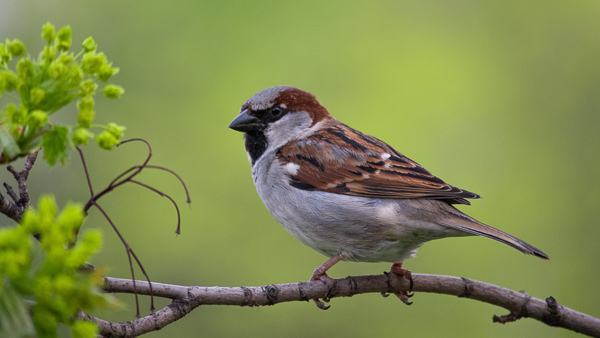
The first thing people notice about House Sparrows is how noisy they are. They’re gregarious, loud and like to squabble! The males are recognisable by their distinctive black bib, white cheeks and grey cap. The grey cap is best way to distinguish a male House Sparrow to a male Tree Sparrow, as Tree Sparrows have a brown cap. Female House Sparrows are generally a light brown overall, with an even lighter grey-brown breast and striped black and brown mantle.
Length: c.14cm
Wingspan: c.23cm
Weight: c.31g
House Sparrows have a varied diet consisting of seeds, shoots, berries, scraps, and insects which they also feed to nestlings. They love the majority of our blends, including our Selected Wild Bird Food, Superior Wild Bird Food, and Premium Wild Bird Food. But our Ground & Table Mix, which is specially formulated for ground feeding birds, is also a firm favourite for House Sparrows.
House Sparrows will happily take from feeders and bird tables but will also feed from the ground.
House Sparrows breed from March to July and usually have between 2 and 4 broods of 4 to 5 eggs. Incubation is between 13 and 15 days and the fledglings leave the nest at the 15 – 17 day mark. The typical lifespan of a House Sparrow is around 3 years.
Nuthatch
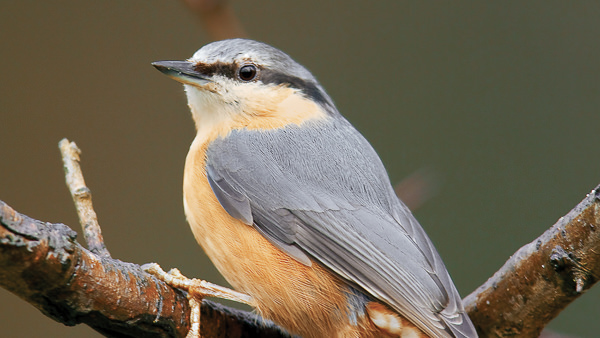
The Nuthatch looks a bit like a small woodpecker due to its long, pointed bill. The breast of the Nuthatch runs from white to yellow-orange, turning into a more rusty colouring on the belly. The topside tends to be a blueish grey and it also has a black strip across its eye, which is an identifying feature. There is little difference between sexes and age, however if you’re lucky to get close enough, juveniles are whiter on the underparts.
Length: c.14cm
Wingspan: c.25cm
Weight: c.23g
Most of a Nuthatch’s diet consists of invertebrates and seeds taken from the trunk and branches of trees. They are particularly fond of Peanuts and Peanut Granules. They also love the majority of our blends, but our Essential Blend for Spring & Summer, Energy Boost and No Mess, No Grow Wild Bird Food are all excellent choices for Nuthatches.
Nuthatches are the only birds that can run up, down and around tree trunks and branches, making them a very fascinating bird to watch. They are increasingly visiting gardens to look for nuts and seeds and will happily feed from the ground, bird tables and hanging feeders.
Nuthatches breed in April and May and tend to have 1 or 2 broods with 6 to 8 eggs. Their incubation period is 16 – 17 days and fledglings stay in the nest until around 24 or 25 days. The lifespan of the Nuthatch is around 2 years.
Robin

Instantly recognisable with its bright red breast and brown crown, the Robin is a common garden visitor the whole year round. Juvenile Robins, however, are not so colourful. Before the first moult they have a speckled brown breast and crown. Some people even believe seeing a robin is a visit from a loved one who has passed on.
Length: c.14cm
Wingspan: c.21cm
Weight: c.18g
Robins have a varied diet including insects, including larvae, fruits and seeds. However, like Blackbirds, Robins are ground feeders and they won’t come to feeders. So, to ensure they get their share of the food you put down, either scatter it on the ground or use a ground feeder. They love the majority of our blends, but we have also created our Robin & Songbird mix specifically for this wonderful bird. Dried Mealworms and Dried Calciworms are also a firm favourite.
Robins can be extremely territorial and aggressive towards other birds, as they defend their feeding areas. However, don’t be mistaken, Robins can be friendly and will often take food from the hand.
Robins breed in April and June and tend to have 2 or 3 broods with 4 to 5 eggs. Their incubation period is 14 – 16 days and fledglings stay in the nest until for between 13 and 16 days. The lifespan of the Robin is around 2 years.
Siskin

The Siskin is a small, colourful finch with a long, narrow bill and a distinctive forked tail. The male has a yellow-green body, black wings with yellow barring and a black crown. The female is greyer than the male and lacks the black crown. Juveniles have brown upperparts and have black streaks on the breast and belly.
Length: c.12cm
Wingspan: c.22cm
Weight: c.15g
Siskins will happily take from hanging feeders, especially when food is harder to find in their natural habitats for example in The Food Gap.
Siskins start to breed in mid-March and tend to have 2 broods with 4 to 5 eggs. Their incubation period is around 12 or 13 days and fledglings stay in the nest until for between 13 and 15 days. The lifespan of the Siskin is around 2 years.
Song Thrush
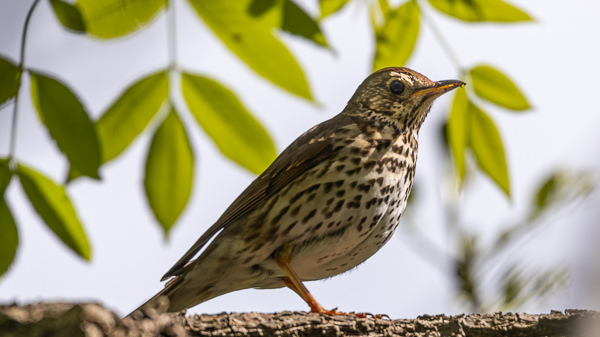
The Song Thrush is easily identified by the speckling on its chest. It is otherwise brown. Females and males are similar in appearance, however juveniles are distinguished by pale streaks on the back.
Length: c.23cm
Wingspan: c.34cm
Weight: c.82g
As well as snails, the Song Thrush eats other invertebrates including insects and earthworms. It also eats fruits and berries. They are ground feeding birds, which means they won’t come to a feeder. As Song Thrushes love fruit, they are particularly partial to our Superior Wild Bird Food due to the currants it contains. However, they will readily eat the majority of our blends including Essential Blend for Spring & Summer, High Energy No Mess, Ground & Table Mix and No Mess, No Grow Wild Bird Food.
As well as its speckling, the Song Thrush is famous for eating snails. It does this by smashing their shells on a stone to get to them. Song Thrushes are ground feeding birds, so are best fed from a ground feeder.
Song Thrushes breed from April to June and usually have 2 to 4 broods of 4 eggs. Incubation is between 14 and 15 days and the fledglings leave the nest after around 14 or 15 days. The typical lifespan of a Song Thrush 3 years.
Tree Sparrow
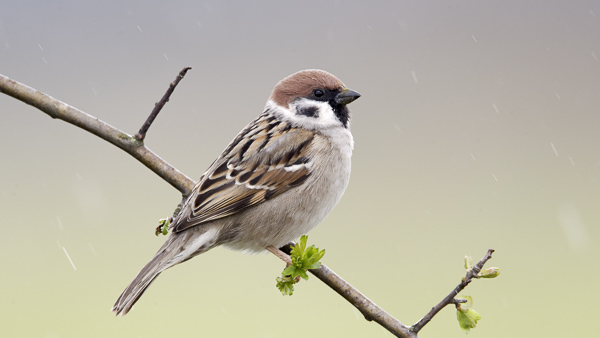
Tree Sparrows are smaller than their House Sparrow cousins, and have a chestnut head and nape, rather than grey, which is the best way to tell Tree and House Sparrows apart. Tree Sparrows also have black cheek spots. Female Tree Sparrows are similar in appearance, however juveniles are distinguished slightly as their cheeks are slightly darker.
Length: c.14cm
Wingspan: c.21cm
Weight: c.22g
Tree Sparrows mainly feed on seeds from trees but they do also feed invertebrates to their young. Most of our blends are suitable for Tree Sparrows, including our Selected Wild Bird Food, Superior Wild Bird Food, and Premium Wild Bird Food. They also love our Essential Blend for Spring & Summer, High Energy No Mess, and Energy Boost.
Tree Sparrows are shyer than the House Sparrow and they tend to hide in and amongst hedges. However, once over a ground feeder, they have now been seen more often on hanging feeders.
Tree Sparrows breed from April to July and usually have 2 or 3 broods of 5 to 6 eggs. Incubation is around 12 to 13 days and the fledglings leave the nest after between 15 and 18 days. Tree Sparrows typically live for 2 years.
Wren
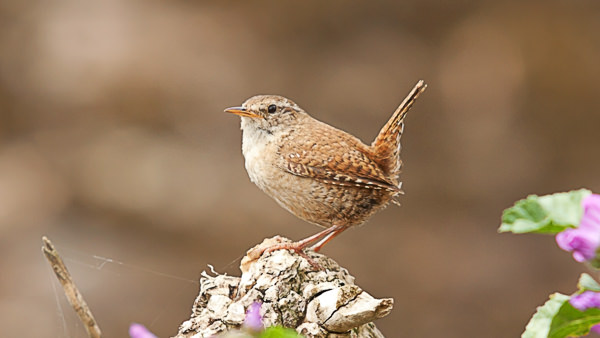
The Wren is a tiny bird, often described as dumpy because of its rotund shape. It has short round wings and a short, round tail, which like the Tree Sparrow is often carried cocked. The upperparts are brown and the underparts being slightly lighter with hints of grey. A key feature for Wrens is their pale eyebrow. Females and juveniles are similar in look, although the juveniles’ eyebrow may not be as prominent. For such a small bird, it has a very big voice so if they do visit your garden, you’re likely to hear them before you see them.
Length: c.9cm
Wingspan: c.15cm
Weight: c.9g
Wrens love to feast on insects, devouring beetles and spiders, usually close to the ground. As a result, they love our Dried Mealworms or Dried Calciworms scattered on the ground. They will love the majority of our blends, including our Robin & Songbird, Selected Wild Bird Food, Superior Wild Bird Food, and Premium Wild Bird Food.
Wrens are ground feeders and rarely come to feeders although this isn’t unheard of. When they do venture out into the open, they quickly dart from one place to another, never staying in one place for too long.
Wrens are the most common UK breeding bird. They breed from April to June and usually have 2 broods of 5 to 6 eggs. Incubation is between 16 to 18 days and the fledglings leave the nest at between 15 and 18 days. Wrens typically live for 2 years.
Yellowhammer

The Yellowhammer has an unmistakable song and is an easily recognisable bird with a bright yellow head and underside, a brown and black back, and brown rump. Female Yellowhammers are similar; however they are more brown than yellow. The juvenile is even darker and less yellow still. They can often be seen perched on a hedge, singing their hearts out.
Length: c.16cm
Wingspan: c.26cm
Weight: c.31g
Yellowhammers eat seeds, particularly grass seeds and cereal grains, however, in summer they also eat invertebrates. Yellowhammers particularly like our Essential Blend for Spring & Summer or our High Energy No Mess.
Yellowhammers are ground feeders, so they won’t come to feeders. If you want to feed them, either scatter feed on the ground or use a ground feeder. Yellowhammers love our No Mess, No Grow Wild Bird Food which is perfect for ground feeding.
Yellowhammers breed from May to July and usually have 2 or 3 broods of 3 or 4 eggs. Incubation is around 13 or 14 days and the fledglings leave the nest at between 13 and 16 days. Yellowhammers typically live for 3 years.
Click on the type of wild bird that visits your garden and find out about the nutritious blends & treats suitable for that bird
Our recent posts giving advice and guidance on wild birds
Ground Nesting Birds
Ground Nesting Birds In an earlier article, we looked at nesting behaviour in wild birds and how you could use this knowledge to encourage birds to nest in your garden. In that article we talked about birds that nest in [...]
Incredible Journeys – Bird Migration Explained
Reading Time: 11 minutes While many species of bird make the UK their home all year round, some just visit for the summer or winter months and then head off to distance shores for the rest of the year. In this blog, we examine bird migration, taking a deep look into one of nature’s most spectacular phenomena to find out more about what makes it possible.
A Guide to Greenfinches
Reading Time: 9 minutes Greenfinches might not have the range of colours of their Goldfinch cousins, but they are still have a spectacular plummage. They are also viewed as one of the best starter birds you can buy by many aviary keepers because they tend to be fairly hardy, have a good song, and don’t have any specific needs that require the management of an experienced keeper.






